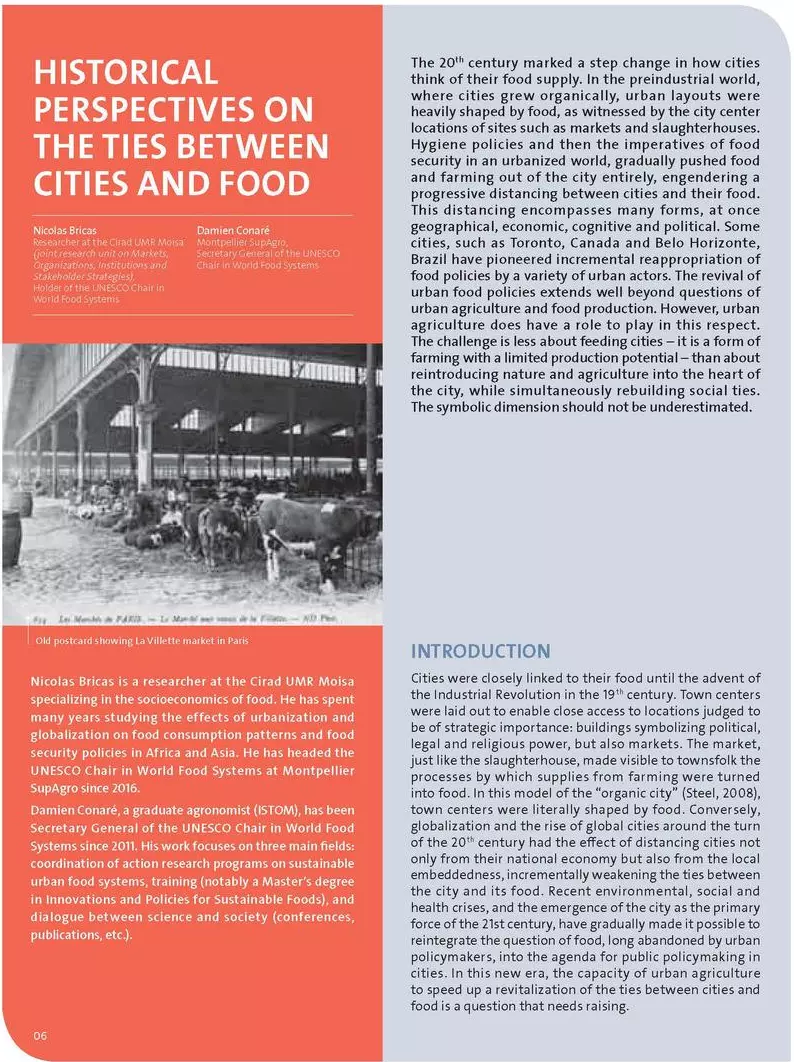Nicolas Bricas, Cirad, UNESCO Chair in World Food Systems
Damien Conaré, Montpellier SupAgro, UNESCO Chair in World Food Systems
The 20th century marked a step change in how cities think of their food supply. In the preindustrial world, where cities grew organically, urban layouts were heavily shaped by food, as witnessed by the city center locations of sites such as markets and slaughterhouses. Hygiene policies and then the imperatives of food security in an urbanized world, gradually pushed food and farming out of the city entirely, engendering a progressive distancing between cities and their food. This distancing encompasses many forms, at once geographical, economic, cognitive and political.
Some cities, such as Toronto, Canada and Belo Horizonte, Brazil have pioneered incremental reappropriation of food policies by a variety of urban actors. The revival of urban food policies extends well beyond questions of urban agriculture and food production. However, urban agriculture does have a role to play in this respect. The challenge is less about feeding cities – it is a form of farming with a limited production potential – than about reintroducing nature and agriculture into the heart of the city, while simultaneously rebuilding social ties. The symbolic dimension should not be underestimated.



